Ely uses historical attractions to focus on the future
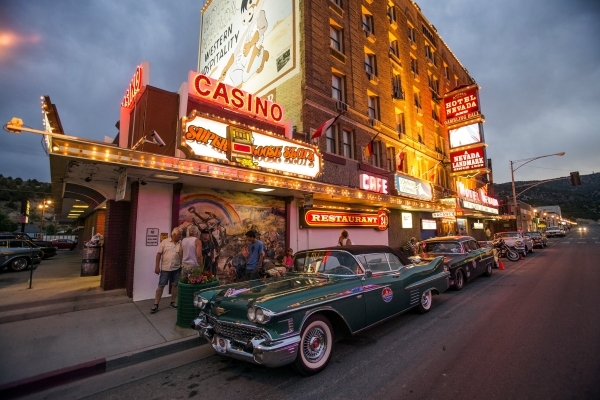
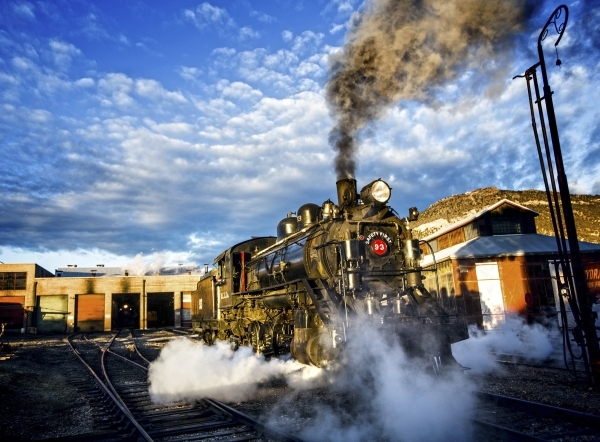

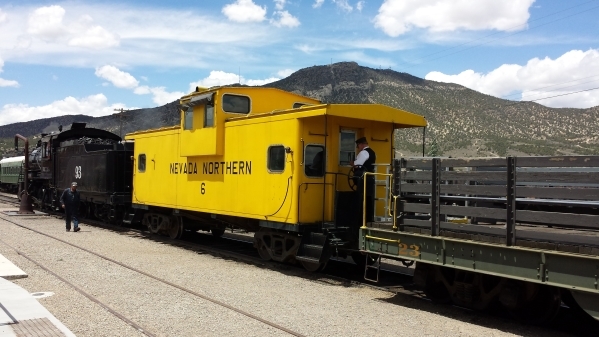
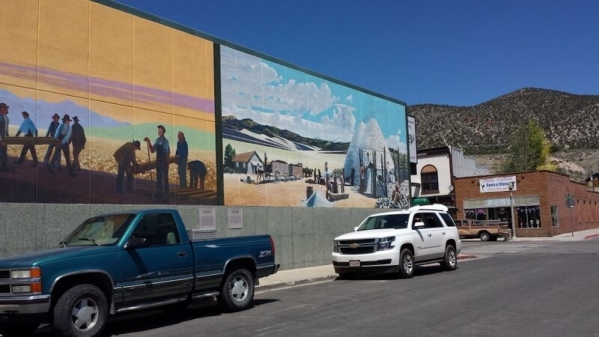
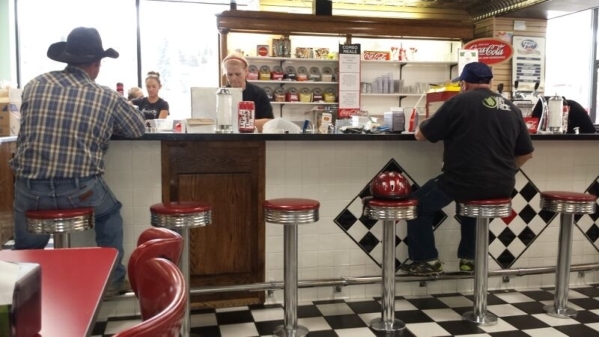
Ely is much like the mines that made it, nearly broke it and partially sustain it today: It doesn’t look like much on the surface, but scrape away the dust and the dirt and you’ll uncover more than a few gems.
The seat of White Pine County, Ely is about 240 miles from Las Vegas. Either of the two possible routes — Interstate 15 north to U.S. Highway 93 to U.S Highway 6, or I-15 to U.S. 93 to state Route 318 to U.S. 6 — takes about four hours by car, on good (but mostly two-lane) roads with some curves but no severe mountain passes.
Named in 1878, Ely, which sits at 6,437 feet, was a stagecoach station until 1906, when the discovery of copper sent it into the boom-and-bust cycles common to mining towns. Today, one of its principal industries is tourism; two main attractions are the Great Basin National Park just up the road, and the Nevada Northern Railway Museum on the east end of town.
Drive down Aultman Street, the main drag, and you’ll see evidence of the bust cycles that have left behind empty storefronts and vacant housing among the historical hotels and government buildings; as a booklet published by the Ely Renaissance Society concedes, “The business district has always been utilitarian in nature and not a draw to visitors seeking ‘charm.’ “
But one of Ely’s great strengths is in its community spirit, and the aptly named society is in the process of infusing plenty of charm.
In 1999, after a copper-mine closure left more than 400 residents without jobs, things were looking dismal for Ely. But rather than accept another bust as inevitable, the society formed that August with the aim of saving the downtown area. Members started by commissioning murals that covered the sides of buildings, and the society’s Art Trail — slogan, “Where the world met and became one” — was born.
The first mural, “Fourth of July Celebration,” is at the White Pine Public Museum (which is several blocks east of the downtown area), commemorating a holiday celebrated by all of the town’s ethnic groups.
Today, the art trail map encompasses 30 sites, including 24 murals, plus sculptures, a labyrinth, parks and memorials. One mural, “In Tribute,” is dedicated to leaders including an early mine and railway owner, four Nevada governors and former first lady Pat Nixon, who was born in Ely.
The Ely Renaissance Society also operates the Ely Art Bank, which showcases works by regional artists, including Review-Journal photographer Jeff Scheid, displayed in a former bank building. (The town seems to make good use of abandoned buildings; the historical Hotel Nevada has turned an old post office into the Hotel Nevada Postal Palace Convention Center.)
One of the most interesting of the society’s projects is the Renaissance Village, north of Aultman Street on Ely Street. The village originally was cobbled together by Bill Geraghty, who had a storage and freight company and interests in several nearby mines. Geraghty moved his family to Ely Street in 1911, and through the ’20s acquired five railroad houses and a slightly larger house, which he moved to the site. The Ely Renaissance Society bought the whole shebang in 2005, and set about restoring the houses to reflect the ethnicities of the various immigrants who came to work in the region’s mine-related industries.
The village’s general store serves as a sort of reception area and gift shop. On a recent Saturday, former Las Vegas resident Rosemary Reinertson, a member of the society who’s well steeped in the area’s history, was holding court, while fellow volunteers Judy Nelson and John Steinauer (a respected artist whose work is displayed at the Art Bank) provided tours of the houses.
Reinertson said Geraghty’s storage and freight company had been based in the building. People who were planning to travel to Ely would send their belongings ahead, to be picked up at the train station and stored until they arrived — although some never did, she said. Geraghty stored it all, she said, and upon his death in 1941 the nearby barn was found packed to the rafters.
Today, visitors walk through the tiny houses, most of which had just a bedroom, kitchen, living room and tiny bathroom, and get a picture of Ely’s settlers. The English house, where the family of the English-born Geraghty lived, contains equipment from a local beauty shop, as well as an impressive old stove.
“Largest house, biggest stove,” Nelson said, adding that the houses were for the most part modern for their time and place, with indoor plumbing, central heat and electricity.
The French house, which was the home of Geraghty’s daughter, is, like the others, decorated with what would have been reminders of home. In the Slavic House, which is dedicated to the area’s Slavs and Croats, a faded handwritten note pinned to a wall gives a formula for use “to remove ink stains from fabrics,” and cautions, “the above is poisonous if swallowed.”
Some of the houses have reminders of families whose descendants remain in the area. In the Slavic House is a photo of Dave and Rose Swetich, ancestors of Tiffany Swetich, who has a State Farm Insurance Agency in Ely. Brenda Moeller, who with her husband, Al, maintains the Italian House, has a photo of her family in it. There also are houses dedicated to Spanish, Greek and Asian residents; a prospector’s cabin, which was occupied by a miner until the ’60s; and a central area for parties and receptions.
Kathy Callahan and Alan Klawitter, visiting from Las Vegas, toured the village.
“We never heard about it until we were riding through town yesterday,” she said. “They did a wonderful job. It’s very impressive.”
There’s also a railroad landing, reached by stairways at the rear of the village. When Nevada Northern Railway trains come by, tradition dictates that those in the village and on the train wave at each other. And Steinauer said the Polar Express stops at the landing so children on the train can take in the Christmas decorations at the village.
The Nevada Northern Railway Museum is at the east end of Ely, a few blocks north of U.S. 93. Steam and diesel trains depart regularly for a trip through two tunnels into the mining district to the west. Rides and tours at the museum include the yard and engine house.
A train narrator said that at Ely’s peak, the railroad, which originally came through the center of town, saw 60 ore trains, 32 passenger trains and two freight trains each day. Mining has all but died out, and the only vestige of those is the historical excursion train. But the tourism industry is working hard to ensure that Ely does indeed see a renaissance.
Contact Heidi Knapp Rinella at Hrinella@reviewjournal.com. Find more of her stories at www.reviewjournal.com and bestoflasvegas.com and follow @HKRinella on Twitter.
Directions: Ely is about 240 miles north of Las Vegas, following a route that begins with Interstate 15 and U.S. Highway 93.
Attractions: The Ely Art Bank is at 399 Aultman St.; elyrenaissance.com. Admission is free.
The Renaissance Village is in the 400 block of Ely Street, a few blocks north of Aultman Street in the downtown area, and is open from 10 a.m. to 4 p.m. Saturdays from the first Saturday of June through the end of September, and for special occasions. Admission is free. Visit elyrenaissance.com.
The Nevada Northern Railway Museum is at 110 Ave. A, several blocks north of U.S. 93 on the east end of town. Admission options include $27 ($16 for children ages 4-12) for a 90-minute train ride and guided tour of the yard and engine house; $135 to ride in the engine; $37/$27 to ride in the caboose; and $6/$3 for museum admission and self-guided walking tour. There also are special-event rides such as the Polar Express, haunted ghost trains, an Italian dinner train and more. For schedule and other details, visit www.nnry.com.
The White Pine Public Museum, 2000 Aultman St., has exhibits of dolls, Indian artifacts, minerals and railroad-related items. Call 775-289-4710 or visit www.wpmuseum.org.
Economy Drug, at 696 Aultman St., has an old-fashioned soda fountain with newfangled conveniences such as electrical outlets and USB ports above the tables. Call 888-289-4929 or visit www.elyeconomydrug.com.
Dining: The Cellblock Steakhouse at the Jailhouse Casino, 211 Fifth St., is a good spot for an economical steak dinner. Call 775-289-3033 or visit www.jailhousecasino.com.
Lodging: Numerous hotels, motels and hotel-casinos, many of which accept pets, are in the area.
Information: Maps of the Ely Renaissance Society’s 11-block, 30-site Art Trail, are available at the White Pine Chamber of Commerce, 636 Aultman St.; 775-289-8877 or whitepinechamber.com.












